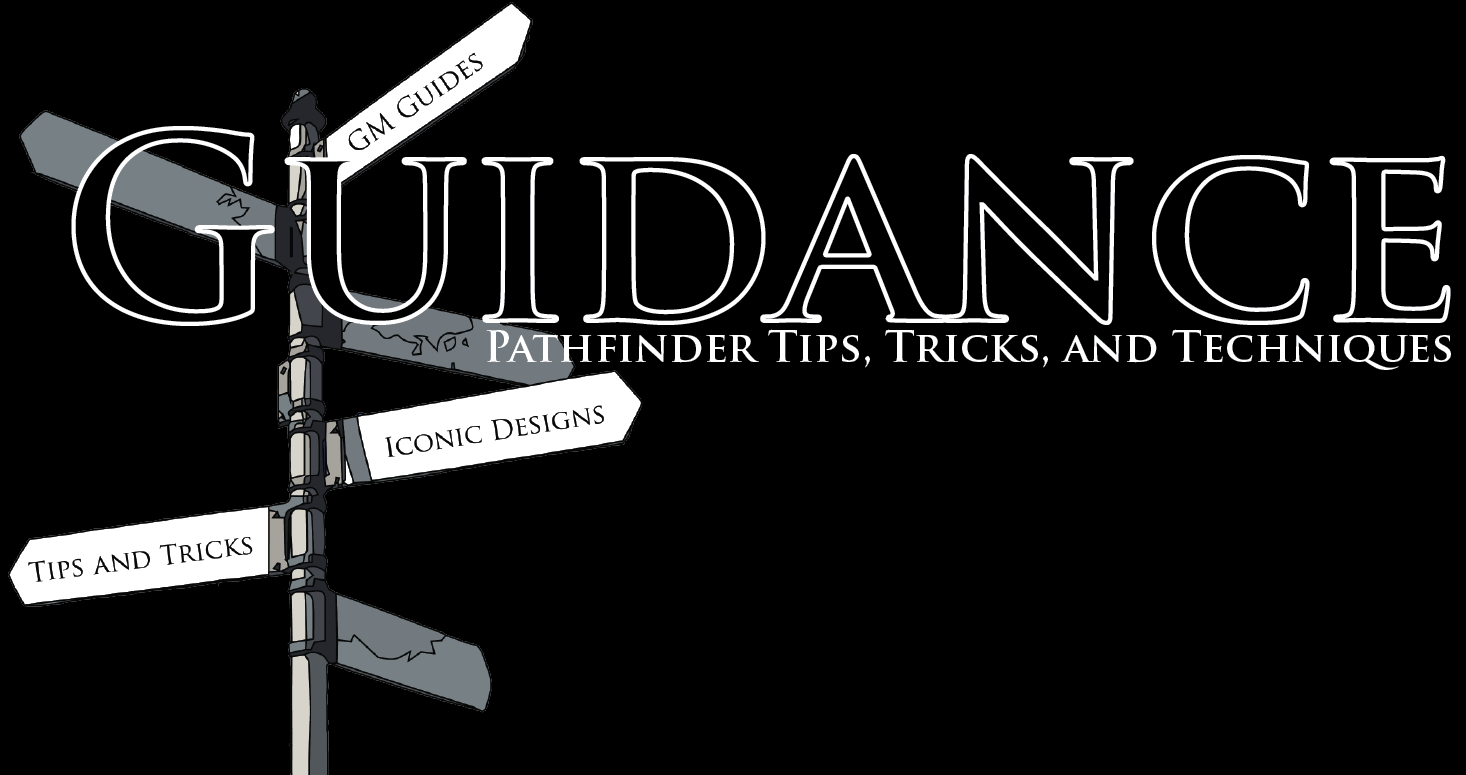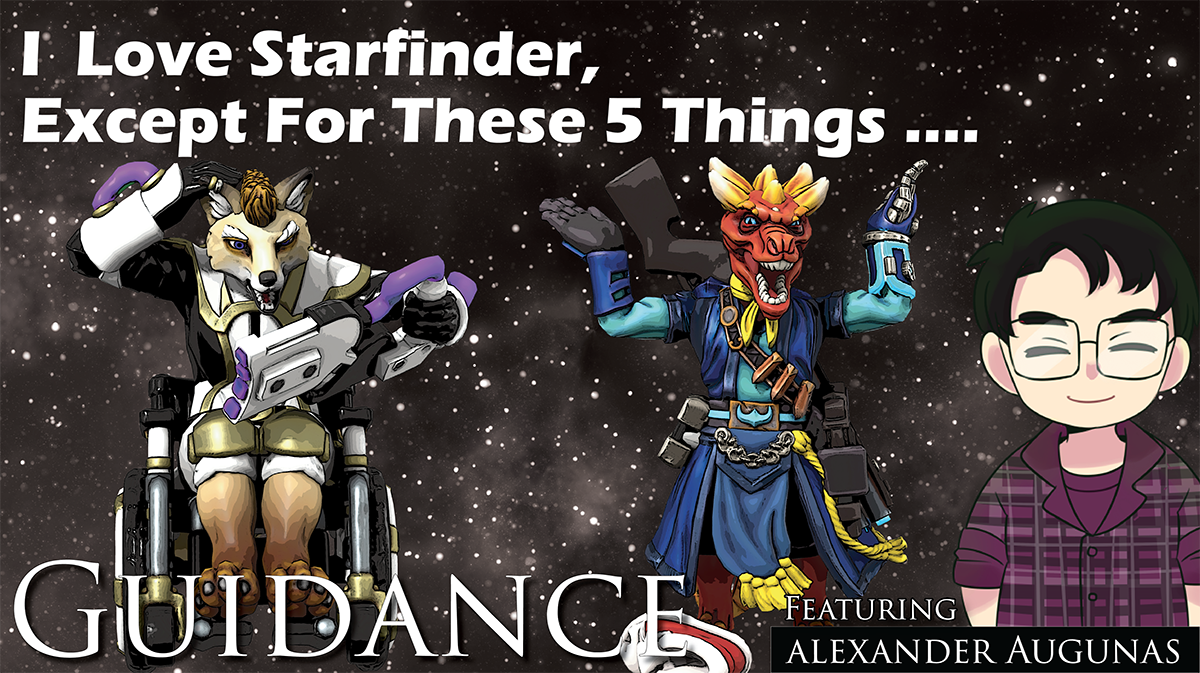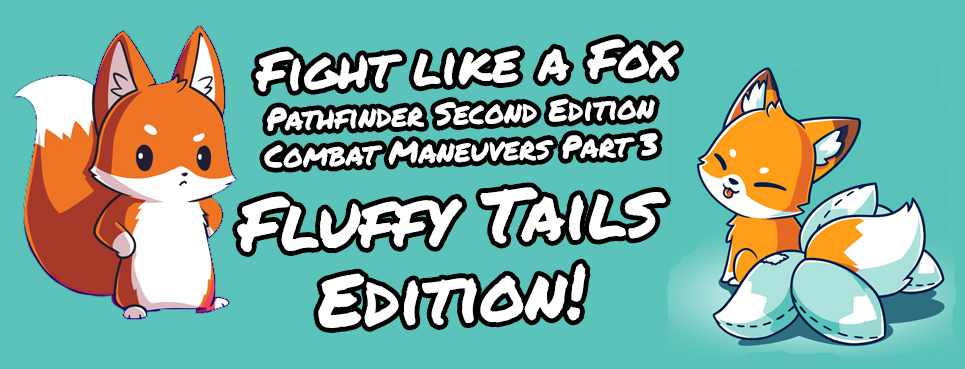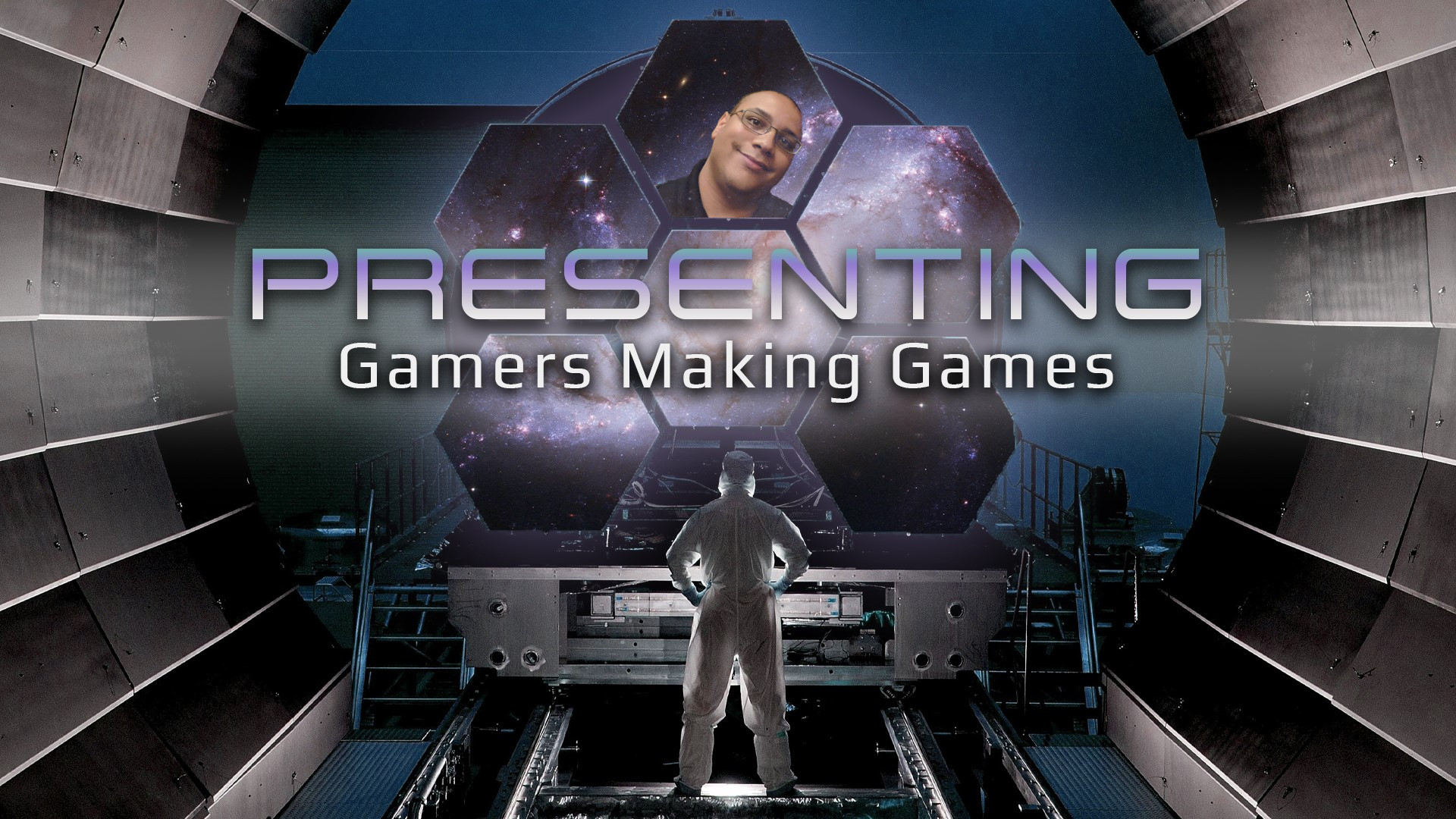Hello! I’m Alexander Augunas, the Everyman Gamer, and considering my place as the master of ceremonies of Know Direction: Beyond, it probably comes as no surprise that I adore the Starfinder Roleplaying Game. It’s honestly my favorite version of the d20 engine right now for a load of reasons. It manages to perfectly capture the mathematical expression of d20 in a way no other derivative has—it’s a game where you feel your character mathematically improve as you gain levels and enemies become easier to handle. Even enemies that are tough feel doable because you see yourself as being able to weather more of a powerful enemy’s attacks. The game’s systems feel very intentional, and I love them.
But one thing you will hear me say frequently is that even if we love something, that shouldn’t mean that we’re above critiquing it fairly. It’s important to be able to recognize faults in your game experience so you know how to better tailor your GMing around those problems or how to temper your expectations as a player around those limitations. For me, however, I think Starfinder is a rare gem in that there are really only 5 things that drive me crazy about Starfinder’s design. Oh, what’s that? You … you want me to go on? Well, okay, don’t pull my leg! If you insist ….
5. Environmental Protections
Stop me if you’ve heard this one before. GM designs a monster with something they do to the air. Maybe it’s a toxin the players breathe in. Maybe it’s a pollen. You describe the effect in full, when suddenly your players stop you. “That shouldn’t affect me, I have environmental protections on.” As a GM you scramble and read the rules for environmental protections. It’s this massive series of paragraphs that basically makes even the most basic armor grant full immunity to a huge number of effects. And, honestly, I kinda wish it didn’t. At least, not for free anyway.
Like, I get it. Of course in a space-age game you would want armor that can ward against the environment. I get it. But couldn’t it have been an armor upgrade, so at least it came at an opportunity cost of something else? At least then you’d have the flavor of, “Did everyone activate their life support systems?” At the very least, there should be rules for breaching an armor’s environmental protections. A standard space suit has that rule, so why not armor? Fights with plants that want to infect you with their spores get a whole lot more dangerous when suddenly they’re trying to break your armor so spores can get into your space suit…
Here’s what I’d do:
- All armor would have the default item level 1 protections described in the Core Rulebook. If you wanted immunity to medium radiation, you’d need to install an item level 7 armor upgrade.
- All armor has an internal battery, and armor consumes battery charges at a rate of 4 per day, so a standard 20 charge battery would last you five days. You could upgrade how long the environmental protections last by placing a better battery into the armor. This seems pretty generous, right? Because that means low-level armor has more days. Yes, that’s true. Except the armor’s upgrades would also draw from that same battery rather than having their own. This would lead to cool scenes like in Iron Man where as a character, you have to decide whether to power your armor or your gadgets.
- Finally, an armor’s environmental protections would worsen if the armor was broken or destroyed. The environmental protections of broken armor consumes battery charges at a rate of 1d4 per hour that the environmental protections, and the armor’s defenses against effects related to breathing, pressure, and radiation cease. All environmental protections cease for a broken armor.
- Some monsters would have abilities that allow them to treat your environmental protections as though they were offline. For example, in the example of said plant, maybe it would have an ability that, while you’re being grappled, it could force its tendrils into your armor and pump your suit full of its pollen. This, admittedly, is not a humongous fix as much as it is a needed addition to Starfinder monster design.
4. Calculating Your DCs Needs to Go
I CANNOT be the only person who hates how GMs have to calculate EVERY DC on the fly. Like, you know how half the skills in the game use “15 + 1-1/2 × your CR” as a DC metric? Yeah, that. I hate it. That should just be called a Stunt Class, SC for short, and it’s simply calculated as 15 + 1-1/2 times your level or CR. Abilities that use a higher calculation can say, “Your Stunt Class + 5.” Along similar lines, PF1’s Combat Maneuver Defense needs to return as a third type of Armor Class alongside Energy Armor Class and Kinetic Armor Class—Maneuver Armor Class. The calculation literally does not need to change, but it does not feel good when you tell players that the number they need to hit is their Kinetic Armor Class + a number. That feels punishing. Saying, “Here is a number I need to beat, here, it’s on your sheet for you no math with a wonky number like 8 required,” is a million times better. That’s a precise measurement too—1,000,000 times better. I don’t make the rules (except when I do, like in COM and SOM).
3. Loot
The d20 system is built on robbing people, but Starfinder, a game that is supposed to take place in the far-flung future, is more egregious about this than literally any other d20 game I have ever seen. What do I mean by this? Well, the d20 system sort of has its roots in “Killing the Other” and “Taking their Stuff;” this is a problem that goes back all the way to the very first adventures of 1E D&D, where you are supposed to ignore the goblin tribes you happen upon and the sociopolitical and socioeconomical reasons for why those people—yes, humanoid monsters with humanoid intelligence are people—are robbing their wealthier, more technologically advanced neighbors and simply enact “justice.” You murder them all to the goblin and take their stuff, and the spoils of your brutal conquest are yours to reap. You can read all about this phenomenon in an article I wrote about racism in TTRPGs last year.
This problem is even worse in Starfinder, and here’s why. Starfinder is a game were your best equipment can cost hundreds of thousands of credits, but your non-combative ways to earn credits by default are restricted to MAYBE a hundred a week. Earn a Living checks give you credits equal to twice what you roll, and since at 20th level you’re probably looking at a maximum bonus of +40 to +45, if you roll a nat 20 you’ll be earning maybe a 130 credits? This ultimately means that murdering people and taking their gear, which is worth hundreds of thousands of credits, is more lucrative then just sitting around making checks. And that’s probably okay, right? Well, no. Because generally speaking, who’s going to have money and gear? Random monsters, or people? You guessed it, PEOPLE.
Yes, I am aware that you can give the party treasure that they can sell for credits. But Paizo’s adventure writers don’t often do that. I’ve played all of Dead Suns and Signal of Screams, the first volume of Against the Aeon Throne, and about half of Attack of the Swarm! and Fly Free or Die. ALL of these adventures overwhelmingly give you loot that you take from the smoldering, dead bodies of sapient that you slew. Literally the Starfinder Society is the only place where I’ve had a Starfinder NPC pay my character a decent wage, and one can argue that the money you earn in those scenarios is based off of the value of the equipment that the people you’ve killed possess.
And just when you think that loot can’t be any more annoying then it already is, there’s the “sale for 10% value” rule. I literally loathe this rule, to the extent that I house rule it away at every opportunity I get. Especially in prewritten Starfinder adventures, where the “wealth” your characters acquire is based on the value of the equipment you find and not the wholesale value of that same gear, you’re usually put into a situation where you use the gear that the adventure writers give you (and like it) or you’re basically cutting your total wealth acquisition by about 60 to 70% depending on the generosity of the adventure (specifically, how much they’re willing to give you credsticks over equipment). So, how would I solve this problem?
- Resale is 10% + 1% × your total Diplomacy bonus. If you have expertise in Diplomacy, you add the maximum value of your expertise die to this total. You can try Diplomacy checks to haggle, but if you fail you can end up losing the deal or getting a worse price. (And walking away from a deal penalizes checks to haggle the item as your character gets more desperate to sell and word spreads about it.)
- You can “upgrade” items into other items of the same type (light armor, computer, etc); if you upgrade an item of the same kind into a high-level model (such as a null-space chamber mk 1 into a mk 2), then the item applies its full price to the price of crafting the higher-level version. If they’re the same type but different kinds (like two magic items), then the item you’re using to upgrade into the new item applies half its price to the new item.
- The game should have some baseline rules regarding patronage and maybe set some tone regarding the murder of sapient and how killing people for their stuff earns you Infamy. (A Organized Play mechanic that, frankly, should be baseline.)
2. Equipment
This is probably something of a shock to many Know Direction fans who are aware of my close relationship with the Equipment chapter of the Starfinder Core Rulebook; I was one of three freelancers who was honored with the opportunity to work on the Starfinder Core Rulebook. Usually CRBs are done completely in-house, and while I don’t know for sure why we were brought on my guess is that Paizo was pretty strained for staff at the time, as not only were the Adventure Path, Player Companion, Campaign Setting Guide, and Core Rulebook products for Pathfinder 1E still expected to ship on-time, but based on comments Jason Bulmahn and Mark Seifter have made on various social media appearances, it seems likely that the the Starfinder Core Rulebook and the Pathfinder 2E Core Rulebook were in development simultaneously and Starfinder was already an all-hands-on-deck project. Take a look at the Core Rulebook’s entry in the OGL and see all of the Paizo people (and not-Paizo people) whoworked on it and you’ll see what I mean.
Now, this isn’t to imply that the Equipment Chapter has any one colossal thing that spans every section that I dislike. Rather, you can really feel that a bunch of different people worked on the Equipment chapter of the Starfinder Core Rulebook and that the rules often feel like they don’t quite line up as a result. Sort of like when you take a Flip-Map and upload it into Roll20 and use the Align to Grid tool to try and make the squares on the map line up with Roll20’s Grid, but it’s off by just a few pixels so while the map works it also triggers one’s uncanny valley. That’s how I feel about the Equipment Chapter. My uncanny valley is triggered. A lot. And by a lot different things.
Armor and Weapons
I hate how the model (aka “mk”) system works for armor and weapons. Every six lines on any given armor or weapon table are fundamentally the same item, just locked off for a higher-level weapon or item. This means that the amount of content that is actually available to players at any given level is inherently small, necessitating books like Armory and constant weapon and armor expansion. I am also not a fan of how armor is a necessity in Starfinder; most of our favorite sci-fi series and shows feature unarmored characters (all of non-Mandalorian Star Wars, Firefly, Serenity, and so on). Yes, I am aware that plenty of different types of armors are designed to replicate, even display, a character’s clothing. No, I do not feel that such designs are the same as actually allowing unarmed characters to be viable.
Here’s what I would do to fix this:
- Armor works like weapon fusions and gives damage reduction; you have a few different styles of armor with statistics that scale based on item level, and a table that tells you how much the armor costs based on item level. Light armor has no armor bonus and a high max Dex bonus, Heavy armor has an AC bonus of +2 and a lower max Dex bonus, and Powered armor works mostly as it does now. Add in the ability to modify armor’s base price using special materials, and I think you’re looking at something pretty good.
- Armor Class, on the other hand, would just be a value that increases as you gain levels. Your skill, not your armor, determines how difficult it is to hit you and your armor makes hits more survivable.
- Weapons would just be weapons; each weapon would have a base item level determined more by the weapon’s properties than it’s damage. You would upgrade a weapon’s damage by applying weapon upgrades, which would take the form of “Machs” or Mks. Think of them as how weapon potency runes work in Pathfinder; weapons are Mk 1 by default and you can apply Mk upgrades to the weapon to increase its damage. For example, applying a Mk 2 upgrade to a laser pistol transforms it from a Mk 1 laser pistol to a Mk 2 laser pistol. Each Mk addition would increase the weapon’s damage dice based on a chart in the book to ensure relative damage symmetry.
Computers
Computers need a complete overhaul. Literally no one knows how they work or what they’re capable of doing to the extent where they’re basically the most hand-waived item in the game. And honestly, that’s okay. I think it’s fine to be able to say, “A computer does X, Y, and Z” as a paragraph or two and leave it be. But if we’re going to do that, there’s no reason that we need four pages that everyone just hand-waives away.
Vehicles
Vehicles are another place where it feels like the game was afraid to give something to players. The vehicle rules in Paizo games are generally obtuse, involving a ton of checks that everyone at the table would rather just ignore. I think some rules are needed, sure, and I’m pretty certain that the intent was to try and prevent the best Starfinder combat strategy from being, “Buy a car and ram people with it,” but sometimes simpler answers are better ones. (Collision rules! Collision rules!)
1. Spellcasters
I could write a whole article about everything I do not like about spellcasters in Starfinder, but let me summarize quickly:
- It sucks to have to fall back on agun, especially if you’re a mystic. 0-Level spells should be viable at all levels of play.
- Spellcasters use a completely different progression metric than any other character in the game. They all have complicated “you only get your chosen powers every 3rd level instead of every 2 levels,” mechanics that make archetypes harder to use.
- Spells are overwhelmingly “save or suck” in a game whose math makes save or suck spells into suck or suck. Basically, SF math is derived from PF1’s math, and SF spellcasters are derived from PF1’s partial spellcasters, like the bard or magus. Those classes had a notoriously hard time with their save or suck spells because PF1’s math (and by extension, SF’s) is balanced around 9th-level spellcasters, meaning that spells in Starfinder quickly start to fall behind in their save DCs by as much as 3. (The difference between having 9th level spells at 16th level and 6th level spells at 16th level.) This is a problem that only really becomes apparent if you play beyond 7th level or so, as your spells quickly start to fall off in their chance to work against enemies.
- The technomancer and the witchwarper are not strong classes. There, I said it. The witchwarper falls behind because Infinite Worlds costs precious spell slots and generally has low impact (honestly much lower than the spell slot you’re using to cast the effect) while the technomancer literally gets one bonus spell slot per day as their cool and unique power at 1st level, and then as they level up they just have at-will low-level spells when the truth of the matter is that low-level spells quickly fade into obsolesce in combat anyway because their effects don’t scale. Compare this to the mystic, who gets power house abilities like healing channel at 1st level and you can plainly see the power discrepancy between the classes. Worse still, the technomancer and the witchwarper have no ways to flavor the kind of technomancer or witchwarper you are. The mechanic has AI options. The operative as specializations. The vanguard has aspects. The mystic has connections. The soldier has fighting styles. The biohacker has a field of study and their choice between Int or Wis. The envoy picks which skills their expertise applies to. The solarian chooses between weapons, armor, shields, and flares. The technomancer and witchwarper have NO choices to make at first level. Here’s a spell cache and the ability to change your bedroom around; have a nice day, kids.
How would I change this? Honestly, both classes need an unchaining. And since all spellcasters are balanced around these two to some extent, the mystic and soon the precog would probably benefit too.
- Technomancers and Witchwarpers need something to pick at 1st level that defines what kind of witchwarper or technomancer they are.
- 0-Level spells need to be overhauled so they’re useful.
- All spells need to have scaling DC; 10 + 1/2 your level + your KSAM instead of spell level. This would actually go a long way towards making Spell Focus less of a mandatory feat tax too, honestly.
- More spells need to have variable level options so spellcasters aren’t stuck taking the same spells at every level.
- All spellcasters need to go on the same “even levels are talents” paradigm as all the other classes, and be balanced around that.
- Spellcasters need to be better about not having mandatory, numeric options as talents. For example, the magic hack that adds half your level to damage? That’s so boring but also arguably so mathematically necesscary; why is that not just baseline?
In Conclusion,
Starfinder is, like, my favorite version of d20 but it’s important to remember that no game will ever be perfect. We should always analyze the games we love for places they could be better so we can all work together and have better games! Blindly supporting a game as flawless just leads to mechanical staleness, and no one wants a stale game.
Until next time, I’m Alexander Augunas the Everyman Gamer signing out to play more Starfinder!







